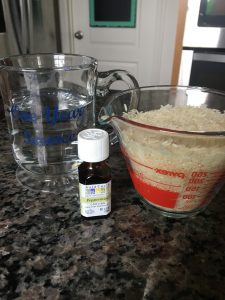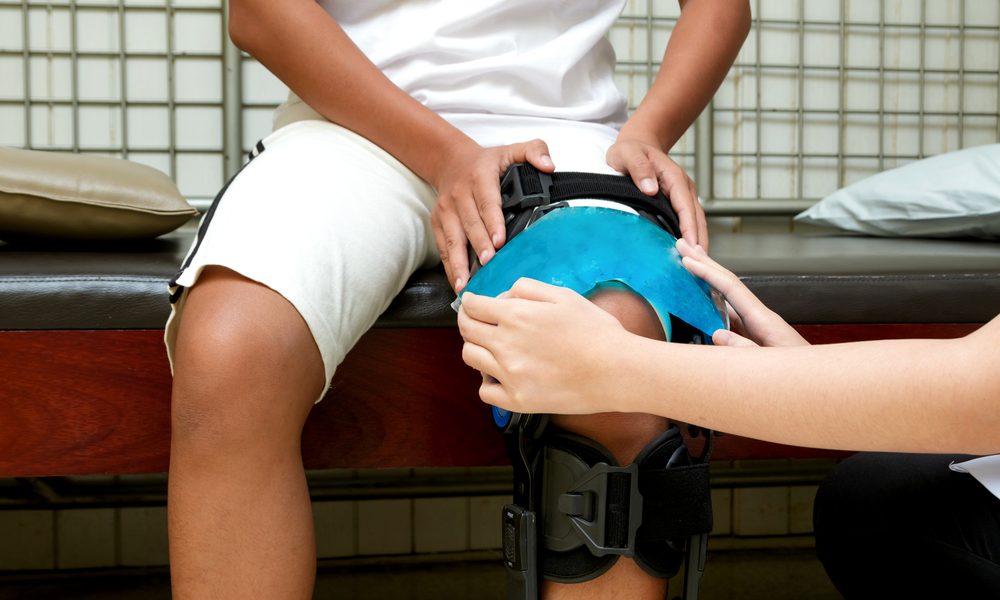Ice or Heat
Every athlete has been told at least once to use ice or heat when they’re sore. A common question we get in clinic is which one is best? With the large variety of products marketed to both professional athletes and the weekend warrior, it’s hard to know which modalities are worth the money or not. Ice baths have been touted for a few decades to improve muscle soreness. Bags of ice (or a bag of frozen peas) have been applied to aches and pains even longer.
New Cryosaunas offer a full-body immersion into dry air cooled to a chill -264 degrees. All the benefits of an ice bath without having to get wet. And they have a cool futuristic, science fiction vibe to boot. Then there are pants that circulate cold water while also using compression to help “massage” sore legs. These two options are much more expensive than a bathtub full of ice, but are the technological differences worth it? Certainly all of these icing methods seem much more intense and dedicated than lounging with a heating pad, right?
Ice, Ice Baby: When is Cryotherapy Effective?
Ice has been proven to provide a positive effect on perceived pain levels. When topical ice is applied, such as an ice pack to a sore joint, blood flow is increased to the affected area. An increase in blood flow is known to help accelerate the growth and repair of damaged tissues. Unfortunately, blood flow is restricted when this ice is applied to a large area of skin rather than a localized sore joint.
There also seems to be a “sweet spot” when it comes to what temperatures seem to be beneficial. Motor performance improves with cooling temps of 64° F or warmer. At just 5° cooler and below, inflammation and tissue edema increases. While studies have shown mild improvement in running athletes at 24 hours post DOMS symptoms, studies looking at DOMS after eccentric exercises are even more underwhelming. In these studies, both control groups who did nothing to attempt to reduce DOMS post-exercise and those who applied ice treatments peaked in soreness at 48 hours post-exercise and returned to a pre-exercise state 72 hours after.
Ice is useful for managing an orthopedic injury, but is less helpful in recovering from general training soreness and fatigue.
Overall, ice is useful for reducing pain perception after an injury, but this is not a useful tool when treating DOMS. To an extent, the increased blood flow and mild inflammation is helpful in rebuilding tissue. Cryotherapy techniques may be helpful for endurance athletes, but show little promise for promoting recovery in strength athletes.
Thermatherapy: Heating up those sore muscles.
****Disclaimer: If you are sensitive to a certain word that starts with an “m” and rhymes with joist, prepare yourself. I tried to find a synonym that sounded better, but “dank” doesn’t quite get the proper point across. You’ve been warned. 🙂 ***
So, if ice simply numbs pain in joints and can actually reduce blood flow to tissue, is heat really any better for reducing pain and improving performance? In short, yes. Studies using heat post-exercise with the goal of reducing the effect of DOMS reported a 47% improvement in pain levels compared to the control group. 24 hours later, these participants reported 138% improvement in pain and performance than those who used ice.
We understand that ice helps numb our response to pain, but why does heat work so well? Heat actually affects the chemistry in our bodies that let our brain read pain signals coming from

the sensory nerves. Topical heat application can significantly reduce the severity of pain from deep muscle soreness. I promise I’ll spare you the lecture on Calcium channels and action potentials, but this is also why things like Peppermint oil, menthol, and Tiger Balm help reduce pain sensations.
Sounds great! But what’s the catch?
Now, here’s the kicker. Most of us agree that sitting on a heating pad feels good, but dry heat takes a full 8 hours of application to reach maximum effectiveness. There are some chemical dry heating pads that can provide this length of heat. But sitting on a heating pad or with the seat warmers on in the car for 8 hours is likely to have negative effects on our mobility anyways.
Moist heat is more effective than dry heat in penetrating muscle tissue. It can begin immediately providing pain relief. In comparison, dry heat takes up to 30 minutes before matching this benefit. Moist heat reaches its maximum effectiveness at 2 hours of application. I realize this is not feasible for the vast majority of us, but it’s a much faster process than dry heat. If you only have 20 minutes to treat yourself, choose the warm bath or moist heat from the homemade rice pack over a dry heating pad to chemical wrap.
Heat when you’re sore. Ice when you’re injured.
To answer the great question of which is better: it depends on the situation. Heat can increase inflammation in an injured joint and cause further damage. Ice is better at reducing the acute pain in this case. However, if your back is sore from a heavy deadlift workout or your quads are burned from leg day, moist heat will get you back in the gym and performing your best faster!

